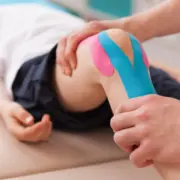Could You Be Experiencing Patellofemoral Knee Pain?
The knee is made up of bones, cartilage, muscles, ligaments, and tendons, all working as one. What makes knee injuries complicated is they could be caused by stress or damage to any of these parts. The knee sits in the middle of three bones: the tibia (your shinbone), the femur (your thighbone), and the patella (the kneecap). The patella is a flat and round bone that protects the knee joint.
What is the patella, and what causes patellofemoral pain?
The patella is a small bone located in front of the knee joint, where the thighbone (femur) and shinbone (tibia) meet. It protects the knee and connects the muscles in the front of the thigh to the tibia. Patellofemoral pain is the medical term used when pain occurs at the front of the knee, around the kneecap (patella), without signs of any damage or other problems in the knee joint.
Knee pain affects people differently. This type of pain is due to a combination of different factors which increase the pressure between the kneecap (patella) and the lower part of the thigh bone (femur). This may happen due to overuse, during a fall, running, cycling, squatting and going up and down stairs.
The most common symptoms of a patellar fracture are pain and swelling in the front of the knee. Other symptoms may include:
- Bruising
- Inability to straighten the knee or keep it extended in a straight leg raise
- Inability to walk
Unfortunately, injury can cause the patella to fracture. A patellar fracture is a break in the kneecap, and it is often very painful. Since the patella acts as a shield for your knee joint, it is vulnerable to fracture if you fall directly onto your knee; or even hit it against the dashboard in a vehicle collision. A patellar fracture is a serious injury that can make it difficult or even impossible to straighten your knee or walk.
Treatment:
- Physiotherapy
- Pain Killers (Anti-Inflammatory Meds or Tylenol)
- Limited movement
- Taping of the patella
Some simple patellar fractures can be treated by wearing a cast or splint until the bone heals. In most patellar fractures, however, the pieces of bone move out of place when the injury occurs. For these more complicated fractures, surgery is needed to restore and stabilize the kneecap, to remove bone fragments, and allow for the return of function.
To learn more about what to do for your patella pain, call Colorado Center for Orthopaedic Excellence at (719) 623-1050 or request an appointment online.







